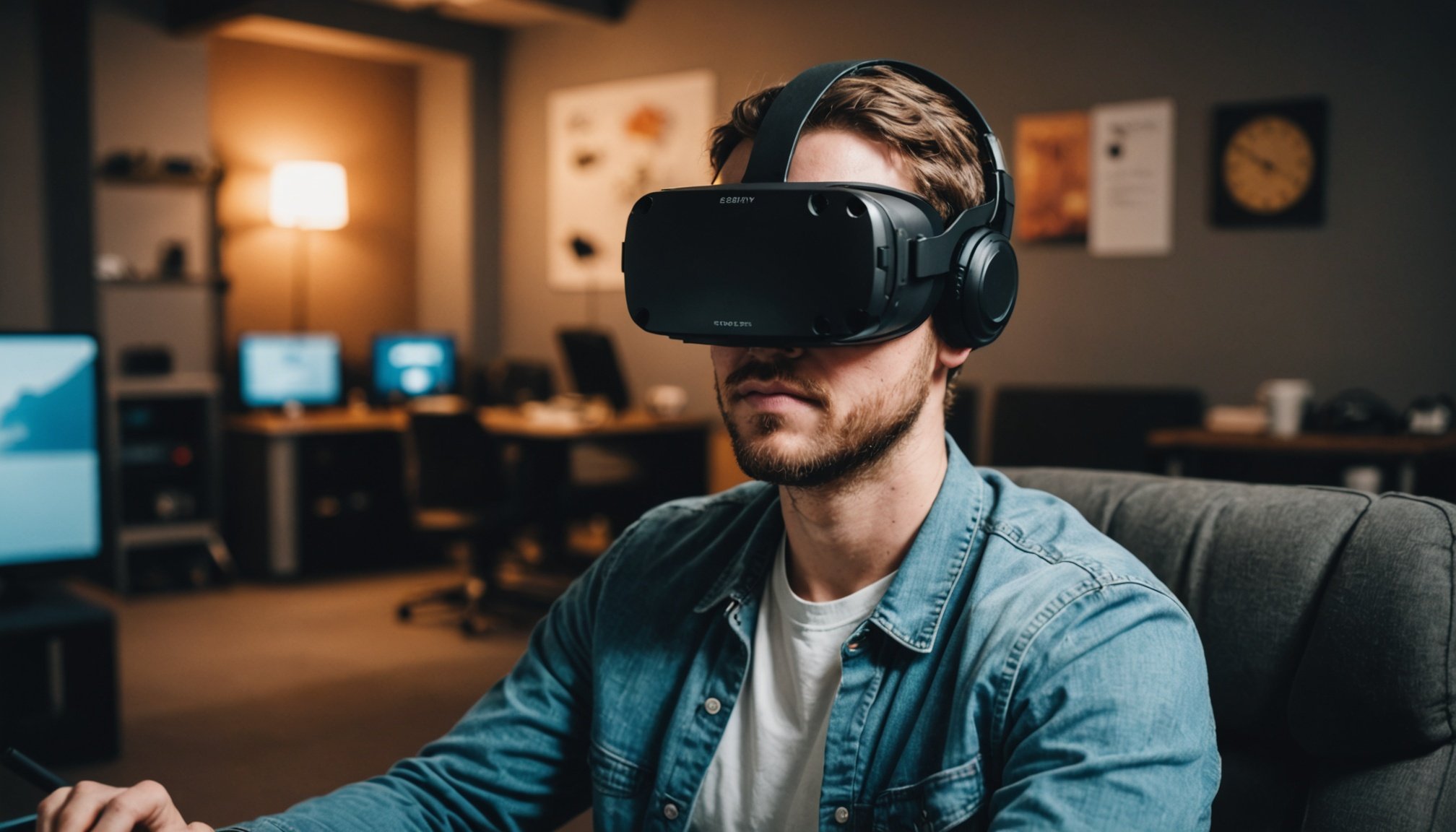Understanding VR Mental Health Therapy Games
VR mental health therapy is a burgeoning approach that blends cutting-edge technology with therapeutic practices. At its core, it leverages digital environments to create immersive experiences. These experiences can aid in addressing psychological challenges, offering an engaging alternative to traditional therapy methods.
The benefits of VR mental health therapy include enhanced accessibility and engagement. For example, individuals can access therapeutic scenarios without needing to leave their homes, which is particularly beneficial for those with mobility issues or anxiety about physical spaces. Additionally, the interactive nature of VR can improve motivation and participation rates.
Also to read : The impact of smartphone updates on long-term performance and features: what you need to know
However, safety in VR therapy cannot be understated. Adhering to safety guidelines ensures a secure and beneficial experience. Users should follow structured protocols to minimize potential risks, such as spatial disorientation or stress from intense simulations. Crucially, parents and guardians need to supervise VR use among younger players to maintain a safe environment.
While VR therapy offers promising potential, users must be aware of the associated risks, including physical discomfort and psychological distress. Prioritizing safety in VR therapy can mitigate these risks, making it a viable and revolutionary tool in mental health care.
Also read : Essential Elements for Crafting Realistic Damage Models in Racing Simulations
Comprehensive Safety Checklist
Creating a secure environment for VR mental health therapy begins with a thorough safety checklist. Safety protocols are essential for minimizing risks and maximizing the therapeutic benefits of VR. These protocols address various stages of play: pre-game preparation, during gameplay, and post-game evaluation.
Pre-Game Preparation
Before engaging in VR therapy, it’s crucial to assess the player’s mental and physical fitness. Consider any pre-existing conditions that may affect their experience. Establishing a safe physical space with ample room and no obstructions helps prevent accidents. Don’t forget to perform equipment checks; ensure the headset fits properly and all devices function correctly.
During Gameplay
While playing, monitoring for signs of distress or discomfort is a priority. Players must be aware of ergonomic practices to avoid injuries. Ensure the headset and controllers are adjusted for comfort. Experts recommend limiting session lengths and scheduling regular breaks to prevent fatigue and overexertion.
Post-Game Evaluation
After the session, debrief players, focusing on their emotional state to process their experiences. Engage in techniques such as guided breathing to ease any tension. Recording feedback can be instrumental in enhancing future sessions, offering valuable insights into improving overall safety and engagement.
Understanding Potential Risks
Engaging in VR mental health therapy offers both significant promise and potential pitfalls. While VR can enhance accessibility and engagement, being mindful of VR risks is essential. These risks broadly fall into two categories: physical and psychological.
Physical Risks
Physical risks in VR usage primarily include discomfort or injuries such as eye strain, headaches, and motion sickness. These can arise from prolonged use or poor ergonomic practices. Adjusting the headset and controller to fit comfortably and taking regular breaks can mitigate such risks.
Psychological Risks
On the psychological front, the immersive nature of VR therapy can lead to mental health safety risks like heightened anxiety or stress, particularly in intense or poorly tailored simulations. Implementing structured and gradual exposure within therapy sessions can help prevent these adverse effects.
Mitigation Strategies
To safely engage with VR, users should adhere to recommended session lengths and create a supportive environment. A secure VR environment minimizes risks and encourages positive outcomes. Monitoring user responses and having immediate access to support during therapy can enhance overall safety. Emphasizing safe gaming practices, like ensuring a decluttered play area, adds another layer of protection.
Creating a Secure Environment
Establishing a secure VR environment is critical to ensuring safety and enhancing the therapeutic benefits of VR therapy gaming. Implementing safe gaming practices begins with thoughtful arrangements and ongoing support.
Home Setup Tips
Creating a well-organised play area minimizes risks of physical injuries during VR sessions. Decluttering the play space is crucial to prevent tripping hazards. Ensure the area has adequate lighting and ventilation to support comfortable gameplay. It may be beneficial to set clear physical boundaries within the space to maintain spatial awareness.
Ongoing Support Strategies
Continuous support enhances the VR therapy experience. Establish strong support systems by utilizing trained facilitators; they can guide and adjust sessions to individual needs. Encouraging a sense of community and peer support among users offers additional emotional reassurance. Interactions with others who share similar experiences can mitigate feelings of isolation and anxiety.
Strategically combining a decluttered environment with comprehensive support systems significantly contributes to a secure and therapeutic VR experience. These strategies are essential for harnessing the full potential of VR mental health therapy while prioritising user well-being and safety. Investing in proper setup and support directly correlates with better outcomes and enjoyment in VR mental health therapy.
Equipment Recommendations
Selecting the right VR equipment is crucial for effective mental health therapy. Optimal therapy game gear enhances both safety and therapeutic outcomes. When choosing a VR headset, prioritise models that offer adjustable comfort features and high-resolution displays, as they can significantly reduce eye strain and improve immersion. Devices such as the Oculus Quest 2 and HTC Vive Pro are often recommended due to their balance of performance and comfort.
In addition to headsets, accessories are essential to a secure and comfortable VR experience. Consider incorporating controller grips to maintain a steady hold and wrist straps for added safety. Ergonomic mats can provide physical comfort and spatial orientation cues, reducing the risk of accidents during therapy sessions.
Software also plays a pivotal role in VR mental health applications. Look for therapy-focused games that offer customisation options to tailor experiences to individual needs. Platforms that include feedback mechanisms can assist in tracking progress and adjusting activities for maximum benefit. By integrating the right equipment and thoughtful software choices, you can enhance the effectiveness and safety of VR therapy, offering valuable support in mental health treatment.
Understanding VR Mental Health Therapy Games
VR mental health therapy games offer an innovative way to tackle psychological challenges. They use immersive digital environments to replicate real-world scenarios, which can be particularly helpful in tackling anxiety, phobias, and even PTSD. By simulating controlled environments, patients are provided with safe spaces to confront their issues.
However, the ultimate safety in VR therapy cannot be understated. Establishing robust safety guidelines is crucial in ensuring a positive therapeutic experience. Players should adhere to recommended session lengths and take regular breaks to avoid physical strain such as eye strain and motion sickness. Gradual exposure is essential to mitigate psychological risks like heightened anxiety during intense simulations.
The benefits of VR therapy are numerous, with increased engagement and accessibility topping the list. Individuals often find VR-based interventions more motivating and less intimidating than face-to-face therapy sessions. This cutting-edge approach supports those with limited mobility, allowing for remote therapy sessions that can seamlessly fit into daily life.
Yet, vigilance in assessing and addressing potential risks makes VR therapy a revolutionary and viable tool in mental health care. By combining advanced technology with tailored therapeutic practices, VR games are transforming the landscape of mental health treatment.











